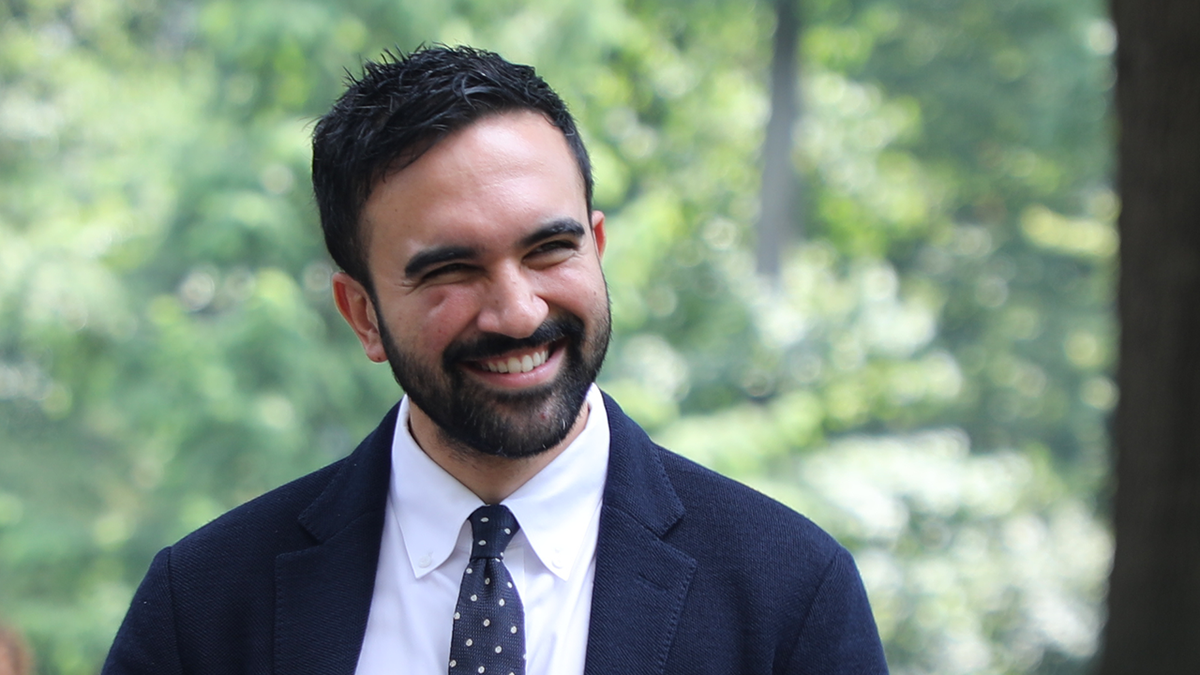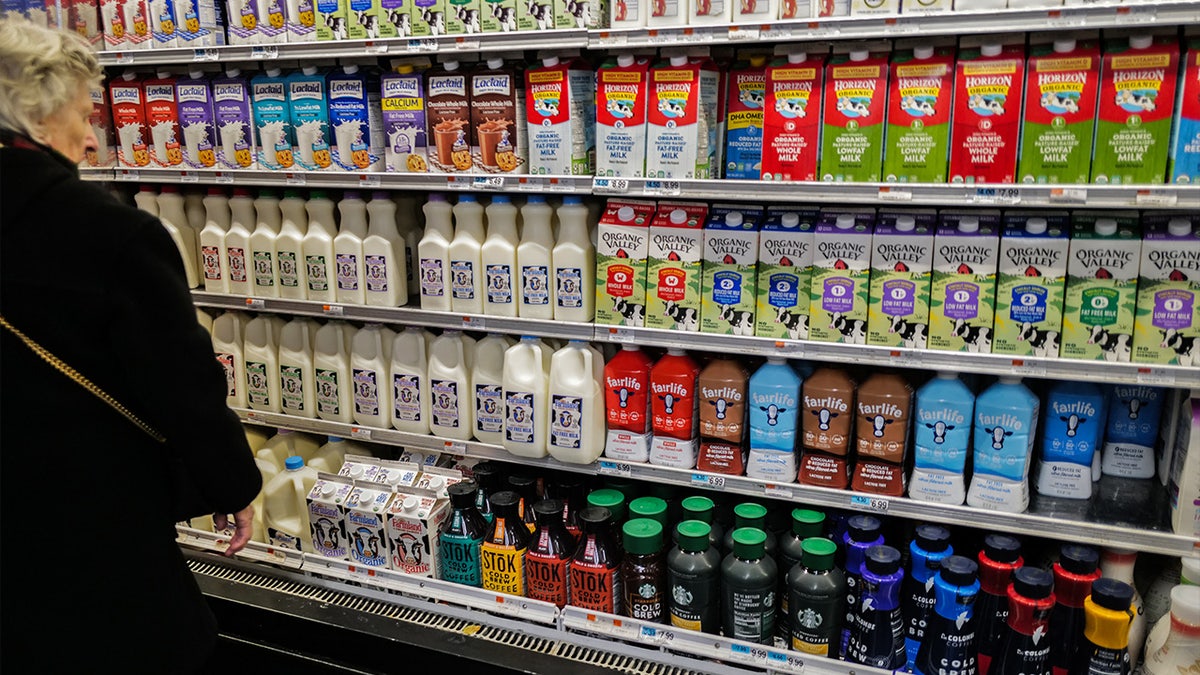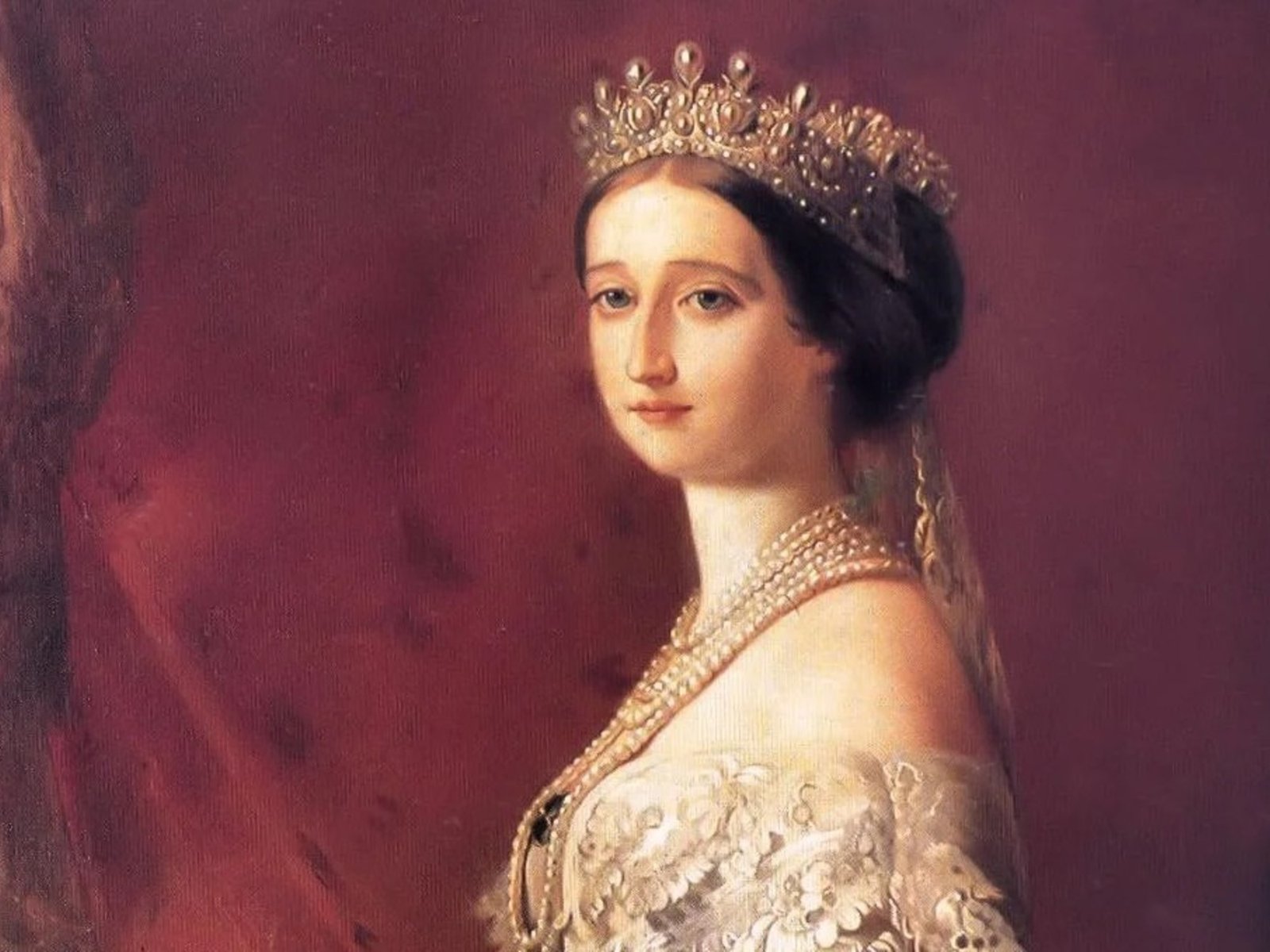INTERNACIONAL
Google News

- Sources — Lakers to convert Goodwin contract, waive Reddish ESPN
- Lakers convert Jordan Goodwin to full NBA contract for postseason eligibility, waive Cam Reddish Yahoo Sports
- The Lakers are waiving Cam Reddish to create roster space for Goodwin, sources tell ESPN. Goodwin has grabbed at least one offensive rebound in 18 of his 19 games played, providing a spark for the Lakers off the bench. x.com
- Lakers converting Jordan Goodwin to standard contract to ensure he’s playoff-eligible, per report CBS Sports
- Lakers to waive Cam Reddish Hoops Hype
INTERNACIONAL
‘Untold damage’: Global assisted suicide movement targets children

NEWYou can now listen to Fox News articles!
In the spring of 2022, Canadian teenager Markus Schouten’s dying wish was that no child should be forced to choose between life and death.
Markus had just learned he was about to die. His oncologist broke the news to him and his family on the eighth floor cancer ward at British Columbia Children’s Hospital in Vancouver, Canada. They held each other, weeping.
Weeks later, lying on his family’s living room sofa, Markus dictated a letter to the Canadian Parliament’s Special Joint Committee on Medical Assistance in Dying, established to set guidelines on a federal law that allowed «assisted suicide» in Canada in 2016.
Markus opposed lobbying efforts to expand the law to children under the age of 18.
‘LOVE YOU FOREVER’ AUTHOR MAY SOON DIE BY ASSISTED SUICIDE, PRO-LIFE GROUPS CALL DECISION ‘HEARTBREAKING’
Markus Schouten with his nephew, Mateo, around August 2021 in Chilliwack, British Columbia. (Schouten family)
«That’s because life is worth living and we should always work to alleviate suffering without eliminating the sufferer,» read the final letter, which was signed by his parents.
The letter closed, «Life is worth living, even when we are dying.»
A month later, Markus died, surrounded by his family and friends, telling them, «See you in paradise.»
Three years later, his parents, Mike and Jennifer Schouten, are carrying the torch for Markus in a mission to block efforts to allow «mature minors» the right to choose to die through assisted suicide. They now work alongside a global network of like-minded advocates, including disability rights groups, who argue the assisted-suicide industry targets vulnerable people who would benefit from assisted living services. Already, in Canada, the law is expected to expand to patients with severe psychiatric disorders, as early as 2027.
But they are up against a powerful, well-funded machine. A Fox Digital investigation reveals the Schoutens and other opponents of euthanasia face a multimillion-dollar global lobby that could be called Assisted Suicide Inc., a sprawling network changing laws worldwide, developing euthanasia services for funeral parlors, selling «suicide pods,» promoting «suicide tourism» and even training «doulas for death.»
«As we continue to expand the euthanasia regime, all the safeguards and windows have gone out the window,» said Mike Schouten. «And it becomes open season for anyone to choose death, including children.»
AUSTRALIAN MOTHER CALLS FOR SOCIAL MEDIA AGE RESTRICTIONS AFTER DAUGHTER’S SUICIDE

Markus Schouten with his family at Canuck Place Hospice in Vancouver on May 28, 2022. (Schouten family)
What began as a limited effort to provide adults with terminal illnesses the ability to end pain and suffering has now grown into an international industry. According to a database compiled by the Pearl Project, a nonprofit journalism initiative, at least 96 organizations worldwide are now part of this movement.
The global lobby cloaks assisted suicide in the language of civil rights and human rights, using euphemisms in their names, such as «assisted dying,» «medical assistance in dying,» «dying with dignity,» «choice,» «end of life,» «completed life,» «final exit,» «free exit» and the «right to die.»
These groups have a presence on every continent, but are predominately found in the West, which also faces alarmingly low birth rates. There are 41 groups in Europe; 31 groups in North America, with 25 of them in the United States, four in Canada and two in Mexico; 13 in Oceania, with most in Australia and one in New Zealand; and only five in Asia, two in Africa, and three in South America.
While most of their work has focused on adults, with Robert Munsch, the Canadian author of the best-selling children’s book, «Love You Forever,» the latest high-profile person to recently announce he was approved for assisted suicide after being diagnosed with dementia. «Hello, Doc — come kill me!» he joked, sharing the news.
The boundaries are shifting. Behind the push to extend these laws to children lies a legal Trojan horse: the «mature minor doctrine.»
This concept, first established in a 1967 Washington Supreme Court case, Smith v. Seibly, once allowed limited medical discretion for minors. But over decades, it has metastasized into a sweeping jurisdiction for granting children autonomy – and secrecy – over their medical decisions. Today, it lets minors make choices without parental involvement on gender pronouns, gender transitions, contraception and abortion. In 13 U.S. states and the District of Columbia, minors can even obtain abortions without parental knowledge.
FEDERAL COURT REJECTS CHALLENGE TO OKLAHOMA LAW BANNING GENDER TRANSITION TREATMENT FOR MINORS

(Left to Right) Brothers Kayden Schouten, Markus Schouten, Micah Schouten and Aaron Schouten in December 2021. (Schouten family)
Now, advocates are leveraging that same doctrine to argue that children should have the «medical autonomy» to choose death. The «National Youth Rights Association,» a 501(c)(3) nonprofit based in Hyattsville, Md., uses the «mature minors» to die by physician-assisted suicide.
Euthanasia is already legal for adults in Australia, Belgium, Colombia, the Netherlands, New Zealand, Spain and 11 U.S. states. But three countries – the Netherlands, Belgium and Colombia – have gone further, allowing «mature minors» to die by physician-assisted suicide.
In February 2023, despite the pleas of Marcus and his parents, Canada’s Special Joint Committee on Medical Assistance in Dying recommended extending the right to some youth, declaring that parents should be «consulted» but that the «will of a minor» with decision-making capacity «ultimately takes priority.»
The same debate has now reached the United Kingdom, where a bill to allow adult euthanasia is moving through the British Parliament. Earlier this year, the British House of Commons narrowly voted 259 to 216 to bar physicians from discussing assisted suicide with youth, meaning nearly half of lawmakers supported discussing assisted suicide for youth.
Katharine Birbalsingh, a British educator known as «Britain’s Strictest Headmistress,» believes it’s only a matter of time before youth are included.
«Assisted suicide will spread, full stop,» she told Fox Digital. «And the people allowed to do assisted suicide will grow, making it younger and younger.»
Birbalsingh argues that Western societies have fallen for the dangerous illusion that «the child must lead,» leading to thinking such as «Oh, he wants to change his gender, or he wants to commit suicide.»
«Once upon a time,» she said, «adults used to say, ‘No, the child is not capable of leading, because he is a child.‘ In the West, we have forgotten that we’re meant to be in charge as adults.»
«There ‘s just a million reasons why young people would want to choose death,» said Birbalsingh, the founder of the Michaela Community School in London. «You know, young people are compulsive, they make whimsical decisions. They make irresponsible decisions. They’re young. That’s sort of the definition of a child.»
«That’s why they need looking after,» Birbalsingh added. «That’s why we need to look after them as adults. That’s our job. It’s our role in life, to keep and protect them, sometimes from themselves. The people making these decisions just don’t understand young people.» Lawmakers there was a «very real risk» that proposed assisted suicide legislation, called the «Terminally Ill Adults (End of Life) Bill,» would be expanded to include children if they didn’t vote for her amendment.
ITALIAN LAW WOULD REGULATE GENDER TRANSITION TREATMENT FOR MINORS

Markus Schouten, with sister Kaitlyn Jongs, on May 16, 2022, in Royston, British Columbia. (Schouten family)
British Labour Party MP Meg Hillier voiced similar concerns during parliamentary debate, warning that teen brains make them particularly «susceptible to being influenced, including into dangerous and risky behavior.»
She said, «In a number of countries, assisted dying laws have been expanded to allow children and young people to end their lives. We need to be alert to that very real risk.»
Another MP, Sorcha Eastwood, cited social media’s toll on youth brain health, saying, «If we throw this into the mix, it has the potential to do untold damage.»
So far, pro-euthanasia groups in the U.S. have remained quiet about extending assisted suicide to minors, but critics fear it’s only a matter of time.
The British Children’s Commissioner, Dame Rachel de Souza, warned that the proposed changes would allow doctors to discuss assisted dying with 17-year-olds «deemed competent,» preparing them for the choice upon turning 18. In a May report, she said that she had convened a panel of youth to discuss the issue.
In Canada, the euphemism «MAID,» or «Medical Assistance In Dying,» has softened the conversation. But the statistics are stark. In 2023, about 15,000 Canadians died through «MAID,» about one in every 20 deaths nationwide, a 16% increase from 2022, making assisted suicide the fifth leading cause of death.
The movement is also big business. Dying with Dignity Canada, based in Toronto, reported $3 billion in expenses in 2024, including $803,555 for advertising and promotions. It publicly argues that «mature minors should be allowed the right to choose MAID,» calling it «unfair» to deny a 17-year-old what a 70-year-old is granted.
The British Columbia Humanist Association, the Canada chapter of Humanists International Inc., a 501(c)(3) nonprofit based in New York City, likewise demands MAID access for «mature minors» and «those whose sole underlying condition is a mental illness,» It insisting there is «no moral or ethical distinction between a mature minor and a young adult.» It argues: «Ensure Dignity in Death.» The «high priestess» of euthanisia, Dr. Ellen Wiebe, also supports extending assisted suicide to children.
The Netherlands offers a preview of what comes next. Legal since 2002, Dutch euthanasia laws permit doctors to end lives of children as young as one, including newborns «suffering unbearably with no prospects of improvement.»
By 2024, euthanasia accounted for 9,958 deaths in 2024, or 5.8% of the country’s deaths.
DEMOCRATIC STATES SUE TRUMP ADMIN OVER ENDING SEX CHANGE SURGERIES FOR MINORS
A recent study published in the International Journal of Psychiatry found that among Dutch euthanasia applicants, 73% were young women with psychiatric diagnoses including major depression, autism, eating disorder, trauma-related disorders and a «history of suicidality.» The researchers acknowledged there is an «urgent need» to study «persistent death wishes» in this «high-risk group.»
In one chilling case, a boy with autism, aged 16 to 18, ended his life after describing it as «joyless» and «lonely,» according to the 2024 annual report of the Regional Euthanasia Review Committees, which approves medical-assisted suicides. His doctor «had no doubt about his decisional competence.»
Last year, 14 Dutch psychiatrists urged prosecutors to investigate a case involving a 17-year-old girl, Milou, who died by euthanasia after years of depression, anxiety and suicidal ideation, following childhood sexual abuse. They warned against the «widespread promotion of euthanasia» leading to «unnecessary deaths.» The Royal Dutch Medical Association scolded the psychiatrists, and prosecutors declined to act.
In 2014, Belgium became the second country in the world to allow child euthanasia, requiring parental consent.The Belgian Federal Euthanasia Review and Evaluation Committee says that six youth have requested euthanasia between 2014 and 2024. Last year, one young person made the request.
The industry has faced allegedly criminal revelations. In Australia, one alleged «euthanasia ring kingpin,» Brett Daniel Taylor, faces prison for selling vulnerable people lethal veterinary drugs nicknamed «the Green Dream.»
Back in Canada, Mike and Jennifer Schouten remain committed to fulfilling their son’s wish.
Michael remembers Markus lying on the sofa, dictating the words that became his son’s final message to lawmakers.
One day, in his final days, Markus said to his parents, «I can see what you are doing with your work is connected to what we’re going through. If we can share our story, we should.»
Now, Michael says, «I feel he is blessing our work.»
This story discusses suicide. If you or someone you know is having thoughts of suicide, please contact the Suicide & Crisis Lifeline at 988 or 1-800-273-TALK (8255).
world,canada,politics,lobbying,health care,health care healthy living
INTERNACIONAL
Boston eyes city-run groceries to fight food insecurity, but skeptics remain doubtful

NEWYou can now listen to Fox News articles!
Boston officials are weighing whether the city should open government-owned grocery stores to make fresh, affordable food more accessible — an idea that’s gaining traction in New York City.
After holding a hearing earlier this month, city councilors agreed to study how other cities have implemented municipal markets to close gaps in food access.
Councilors Ruthzee Louijeune and Liz Breadon, who called for the hearing, did not respond to multiple requests for comment from Fox News Digital.
ATLANTA’S CITY-RUN GROCERY SEES EARLY SUCCESS, SPARKING DEBATE OVER GOVERNMENT’S ROLE
While Boston leaders are still exploring the idea, Atlanta has already put the concept into practice, opening its first city-run grocery store earlier this year.
Atlanta Mayor Andre Dickens told Fox News Digital that Azalea Fresh Market has served more than 20,000 customers since opening its doors on Aug. 28.
Atlanta Mayor Andre Dickens said Azalea Fresh Market has served more than 20,000 shoppers since opening on Aug. 28. (Paras Griffin/Getty Images)
«In its first month, fresh produce made up 11.6% of total sales, exceeding the national average of 10% and highlighting a community demand for healthier food options,» Dickens said, adding that the turnout shows how strong the need was in a neighborhood «long underserved by grocers.»
«Azalea Fresh Market is proof that when we work together as a city, we can deliver real solutions that change lives,» he added.
The early success in Atlanta comes as similar ideas gain momentum elsewhere, including in New York City, where Democratic mayoral candidate Zohran Mamdani has championed city-owned grocery stores as part of his controversial campaign platform.
Mamdani, a 33-year-old democratic socialist upstart, has placed affordability at the center of his agenda to lead America’s largest city. He has campaigned on free buses, rent freezes for tenants in rent-stabilized apartments and city-owned grocery stores.
MAMDANI’S PUBLIC GROCERY STORES MAY HAVE DEVASTATING EFFECTS ON CITY’S FOOD SUPPLY

New York City Democratic mayoral nominee Zohran Mamdani has placed affordability at the center of his campaign to lead America’s largest city. (Deirdre Heavey/Fox News Digital)
But not everyone is convinced city-run grocery stores are the right solution.
Ryan Bourne, a top economist at the libertarian-leaning Cato Institute think tank, told Fox News Digital that «Boston’s flirtation with city-run supermarkets is a bad idea.»
«Government doesn’t become Costco by proclamation,» he said. «Private stores have specialized knowledge about their sector and a profit incentive that encourages them to be efficient. Without those things, a public grocer would likely run things badly, it would only ‘work’ to deliver low-priced food through extensive permanent subsidies.»
Bourne warned that taxpayer-backed subsidies or tax breaks could turn a public grocery into «a badly targeted, in-kind welfare scheme,» adding that heavier subsidies to cut prices could lead to «in-store queues, empty shelves from shortages, and products being resold on black markets.»
TREASURY’S BESSENT WARNS NYC: NO BAILOUT UNDER MAMDANI – ‘DROP DEAD’

Some critics say that community-based organizations, not governments, are better equipped to help low-income families with their groceries. (Elijah Nouvelage/AFP/Getty Images)
Judge Glock, director of research and a senior fellow at the Manhattan Institute, told Fox News Digital that «city-run grocery stores, like most city-run businesses, tend to do poorly.» He pointed to a government-backed store in Kansas City that shut down despite a nearly $20 million investment.
«There is little justification for the government competing with for-profit grocery stores,» Glock said, noting that supermarkets already operate on some of the slimmest profit margins of any major business. «Further eroding those profits through subsidized competition would only make it harder for regular grocery stores to provide food for their customers.»
John Peluso, a research associate at the Heritage Foundation’s Thomas A. Roe Institute for Economic Policy Studies, told Fox News Digital that government-run grocery stores are «ineffective at reducing the overall price of groceries.»
KELLY LOEFFLER: MAMDANI’S SOCIALIST PLANS THREATEN NYC’S BUSINESS CORE

Food prices across the nation are rising due to several factors, including labor shortages and tariffs. (Charly Triballeau/AFP/Getty Images)
«They require taxpayer subsidization to operate at low margins in areas of low profitability — and those costs are ultimately passed on to the taxpayer,» he said.
He added that if cities truly want to improve food access, they could achieve more by easing taxes and regulations for all grocers. «If municipalities reduced or eliminated taxation and regulations for everyone, free-market entrepreneurs would flood into cities like Boston, eliminating the issue at its source,» Peluso added.
CLICK HERE TO DOWNLOAD THE FOX NEWS APP
Peluso also argued that community-based organizations, not governments, are better equipped to help low-income families.
«Government grocery stores are much less efficient at helping the poor than food pantries or other local nonprofits,» he said, calling the city-run model «a kind of Soviet-style market meddling.»
boston,zohran mamdani,new york city,inflation
INTERNACIONAL
Quién fue Eugenia de Montijo, la emperatriz dueña de la lujosa corona que rompieron los ladrones tras el robo al Museo Louvre

Eugenia de Montijo, la emperatriz de la moda
La corona robada

 CHIMENTOS3 días ago
CHIMENTOS3 días agoLaura Ubfal mostró una escandalosa foto de Mauro Icardi con la hija de Benjamín Vicuña

 CHIMENTOS3 días ago
CHIMENTOS3 días agoSe confirmó de qué murió la famosa actriz Diane Keaton a los 79 años: «Murió a causa de una neumonía»

 POLITICA3 días ago
POLITICA3 días agoSantiago Caputo le respondió a Macri, que había pedido diálogo post electoral

















